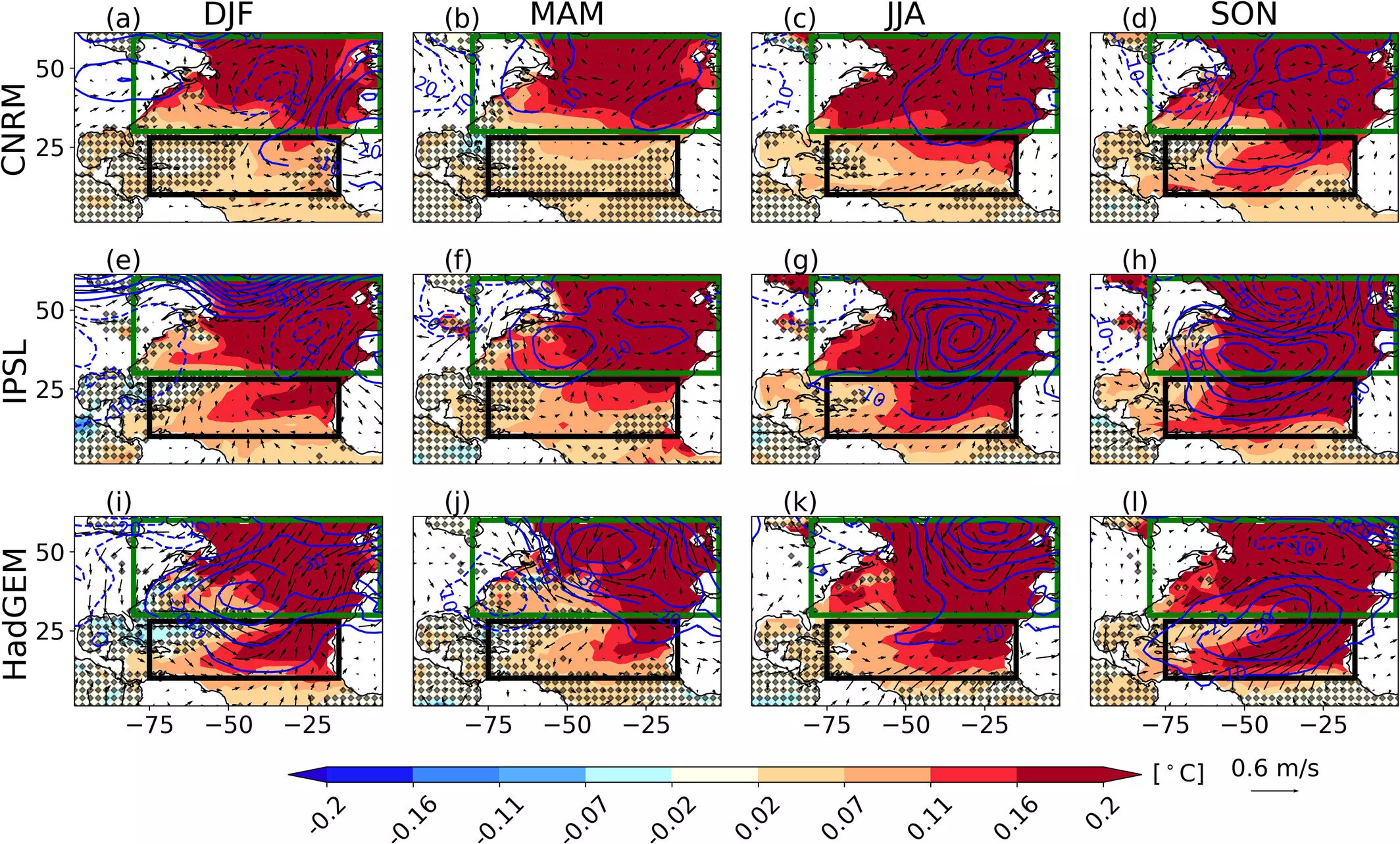The relationship between the oceans and the atmosphere is complex and deeply interconnected, with recent research shedding new light on how these interactions influence global climate patterns. A crucial study from the University of Reading highlights the role of upper ocean dynamics in the Atlantic Ocean, specifically focusing on a phenomenon known as Atlantic Multidecadal Variability (AMV). This phenomenon signifies critical temperature fluctuations in the North Atlantic that affect weather and climate far beyond its locality.
Traditionally, climate scientists have linked shifts in global weather patterns primarily to the heat exchanges between the ocean and the atmosphere. However, the research led by Dr. Balaji Senapati has redirected attention towards the ocean’s mixed layer—the upper section of the ocean where currents and winds intertwine, affecting thermal dynamics. This study suggests that changes in the depth of this mixed layer are central to understanding AMV, with profound implications for various climates around the globe.
The findings indicate that when temperatures rise in the extratropical North Atlantic, trade winds weaken, resulting in a shallower mixed layer. Consequently, a thinner layer of water absorbs more solar energy, effectively heating the tropical Atlantic region. This temperature rise enhances the feedback loop: the warmer water causes further weakening of trade winds, escalating the depth reduction of the mixed layer, and in turn, intensifying warming.
Such interactions also explain how the AMV affects a variety of weather phenomena. For instance, this variability influences hurricane activity in the Caribbean and alters rainfall patterns in regions like the Sahel, illustrating how one oceanic region can dramatically impact global weather systems.
The study’s implications extend into the realms of climate modeling and prediction. Current models have been critiqued for inadequately accounting for the complexities of upper-ocean processes, potentially leading to inaccurate forecasts of AMV behavior and its cascading effects globally. By integrating a more nuanced understanding of ocean mixing dynamics into climate models, researchers aim to enhance forecasts and better prepare for potential climate shifts.
As climate change presents unprecedented challenges, insights into natural climate variability become invaluable. Enhancing our understanding of the Atlantic’s mixed layer and its role in AMV not only improves climate predictions but also aids in devising more effective strategies for addressing climate-related issues. This research marks a significant advancement in how scientists approach the interplay between ocean dynamics and global climate, encouraging a more comprehensive view of climate prediction and mitigation strategies.
Further research in ocean-atmosphere interaction will clarify the subtle mechanisms shaping our weather systems, leading to a more resilient approach to the environmental hurdles we face in the future.

